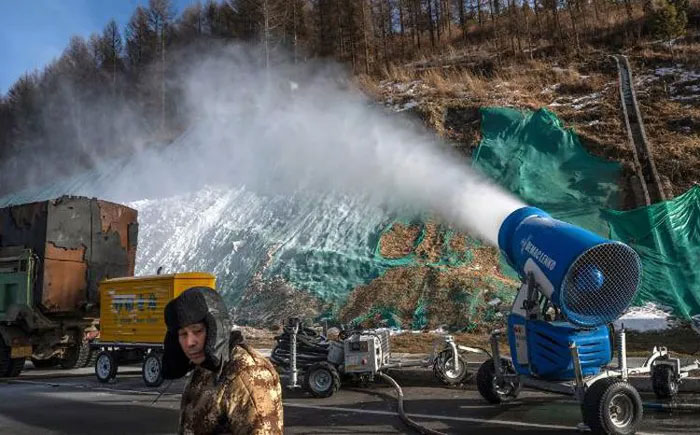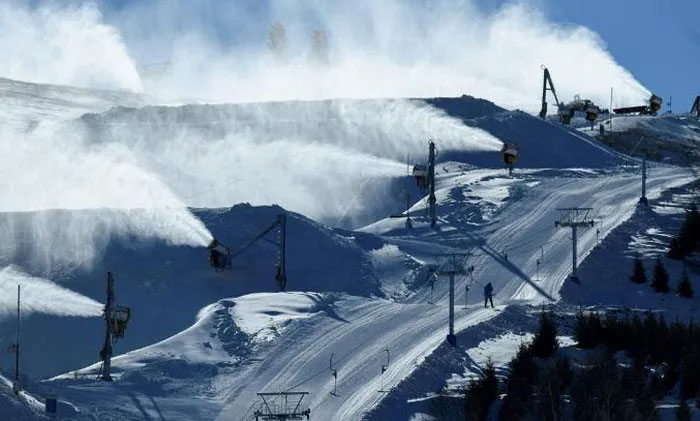The process of creating artificial snow consumes a significant amount of energy and water. This year, the Beijing Winter Olympics requires 1.2 million cubic meters of snow to cover the competition areas.
According to CNN, climate change has forced the Winter Olympics to rely almost 100% on artificial snow. This trend is evident among winter sports venues worldwide.

Snow-making machines in Zhangjiakou, Hebei province, where winter sports competitions for the Beijing Winter Olympics are held. (Photo: CNN).
A recent study indicates that by the end of this century, only one of the 21 cities that have hosted the Winter Olympics in the past 50 years will still have a suitable climate for winter sports.
As the Earth warms and weather becomes increasingly unpredictable, natural snowfall has become less reliable for winter sports. Consequently, artificial snow has “taken center stage.”
However, producing artificial snow consumes a considerable amount of resources, requiring substantial energy and water to generate under warmer climate conditions. Athletes have also expressed concerns that winter sports become less safe when relying on artificial snow.
The average annual snowfall in Yanqing and Zhangjiakou, which host some of the competitions, is only about 20 cm. This has led to the use of snow-making machines.

Snow-making machines at a competition in Zhangjiakou in November 2021. (Photo: CNN)
The Italian company TechnoAlpin has been tasked with producing the necessary snow for outdoor winter sports events in Beijing for the Olympics.
Michael Mayr, the regional manager of TechnoAlpin, shared: “We are proud to be the only company providing snow-making systems for the Beijing 2022 Winter Olympics.”
However, a significant challenge for snow production in some areas of Beijing is that the temperatures are not “sufficient” to freeze water. Therefore, Mr. Mayr stated: “Clearly, we need more energy as the weather warms up.”
Traditionally, snow-making primarily relies on snow guns and temperatures at or below freezing. To adapt to warmer temperatures and lower altitudes, a different approach is required. TechnoAlpin has announced that they have fully transferred snow guns, fan-powered snow machines, and cooling towers to Beijing since 2018.
The process of creating artificial snow consumes a significant amount of energy and water. This year, the Beijing Winter Olympics needs 1.2 million cubic meters of snow to cover a competition area of 800,000 square meters. Thus, the demand for water is immense. The International Olympic Committee (IOC) estimates that the amount of water required for snow production at the Olympics is equivalent to the drinking water needs of nearly 100 million people per day.
Meanwhile, athletes are also concerned about competing on artificial snow. French athlete Clément Parisse, who won a bronze medal at the Pyeongchang 2018 Winter Olympics, shared that artificial snow is often slick and icy, increasing the challenge.

















































